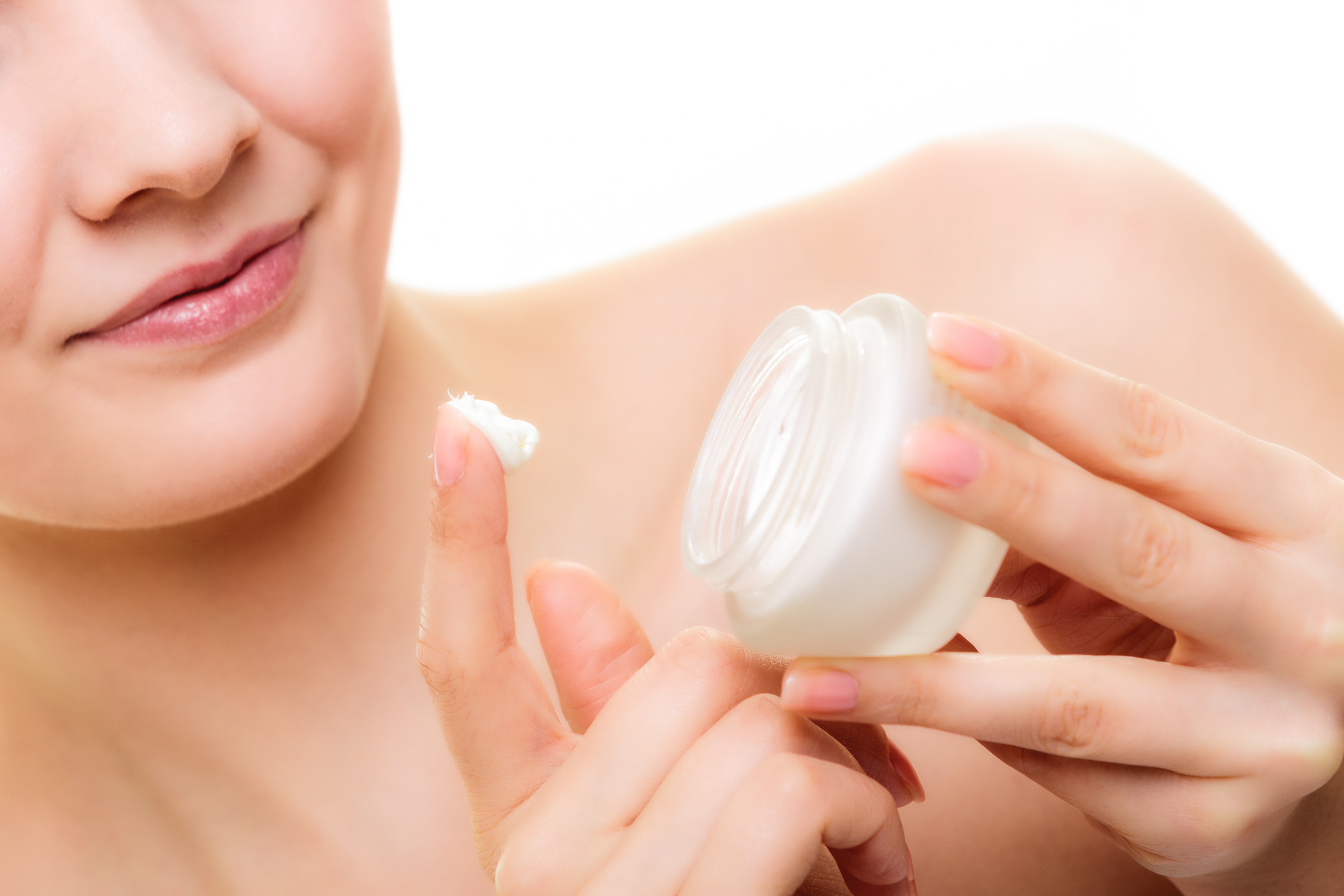Vitamin A: how it can treat photo-ageing
Dr Des Fernandes, founder of Environ, tells us why vitamin A will always remain essential for treating photo-ageing.
Vitamin A was “discovered” approximately 100 years ago. By 1930 Sulzberger, an American physician known for his major contribution to dermatology, proposed that, because the vitamin A molecule was so sensitive to light, a localised vitamin A deficiency might be responsible for wrinkled skin, which is seen only on areas exposed to sunlight.
The first reference to the anti-ageing effects of vitamin A (retinyl palmitate) was published in 1954, yet it was ignored, probably because people expected the benefits to be immediately visible, whereas changes only became apparent after prolonged use.
Sun induced localised vitamin A deficiency
Every time we go out into light we start destroying the vitamin A in our skin, so we lose vitamin A from our skin every day. In the upper layers of the skin, just below the horny layer, vitamin A is concentrated and acts as a functional natural sunscreen that protects us from UVA as well as UVB.
It is in more or less the same area of the epidermis where vitamin D is manufactured, but the interesting thing about vitamin A is that while it is a sunscreen, it does not interfere with the UVB rays that manufacture vitamin D.
In addition, vitamin A is also found in the deeper parts of the skin where our collagen and elastin are found. This area can only be reached by UVA rays. Vitamin A also absorbs the energy of UVA rays in the deeper dermis. Standard sunscreens do not give sufficient UVA protection so the addition of vitamin A gives added UVA protection.
Unfortunately, the absorption of UVA and UVB rays has a downside: the stores of vitamin A are fairly rapidly depleted and that has important metabolic consequences – it leads to a loss of vitamin A effects in the nucleus and DNA of the cell where it is utterly important for 1,000 genes. You can get some idea of the importance of vitamin A if you understand that there are 20,000 genes in your body. Vitamin A controls five per cent of our body’s genes.
Interestingly, vitamin D works intensively with vitamin A and controls about 4,000 genes so these two vitamins have a massive influence on the healthy function of the gene pool in our bodies.
How to ensure our skin remains rich in vitamin A
We need a safe and secure way to store vitamin A because the body needs it every second of the day. If we get more sun than usual, or if the skin is injured, then we need more vitamin A than normal.
Vitamin A is stored in a special chemical form (called an ester) mainly as retinyl palmitate (RP). It does not matter what type of cosmetic vitamin A you apply to the skin, virtually all of it is converted into the storage form within a very short time. When our body needs it, stored vitamin A is converted by enzymes into the acid form which is the version that works on the DNA.
There is no substitute for vitamin A. No alternative chemical can keep our skin cells safe and healthy. We need to ensure adequate doses of vitamin A all of the time, starting from when we are developing in the uterus until the end of our lives.
Nature planned for us to keep lots of vitamin A in our skin cells, but the sun easily destroys these stores. That then causes photoageing, pigmentation, wrinkles and sallow skin. Topical vitamin A supplementation is the safest, fastest way to allow us to promote the effects of vitamin A in the natural way but in the beginning this might irritate the skin when people have long-standing vitamin A deficiency.
I recommend using the “soft” retinyl palmitate/propionate for starting vitamin A nourishment of the skin. I believe it is also important to supplement the vitamin A by mouth, allowing one to receive full benefits without the risk of irritating the skin.
As the vitamin A is building up in the skin, topical applications of vitamin A can be used to get more intensive rejuvenation, which cannot be achieved by oral supplementation alone.

Vitamin A myths demystified...
1. Topical vitamin A irritates and dries out the skin
This only applies to people who have had important sun damage and have progressively destroyed the special receptors for vitamin A that are normally found on the surface of our cells. Young children do not get dry or irritated skin when they use vitamin A products because they have all the normal vitamin A receptors on the surface of the skin cells. As a result vitamin A easily gets into the cell and is metabolised.
As we damage our skin through sunlight, we destroy these receptors. The consequence of deficient retinoid receptors on the cell surface, is that when one applies topical vitamin A it accumulates outside the cell and causes a chemical irritation because it is not supposed to be outside the cell.
Paradoxically, the only way we can build receptors again is with exposure to vitamin A and that is why people who get a retinoid reaction are demonstrating that they desperately need vitamin A but must take an oral supplement of vitamin A and gradually and continuously expose their skin to vitamin A.
Eventually as one makes more receptors, the irritation and dryness disappears. Some people have abnormal vitamin A metabolism and it may take a lot longer than they wish, but it will always be beneficial in the long run.
2. Vitamin A makes the skin thinner
I don’t know how this rumour ever started! Vitamin A, in all its forms, always ends up making the skin thicker and healthier with a more effective outer protective barrier.
Maybe the myth started because retinoic acid initially causes flaking of skin and is thought to be a peel. This is transient. The thickening is real and enduring.
3.Topical vitamin A is dangerous in pregnancy
Vitamin A is a precious commodity for the skin that it selfishly guards – it can’t leave the skin because skin does not have the enzyme systems to move it into the blood.
Every molecule of vitamin A ends up being safely stored and then metabolised to vitamin A acid to ensure that the skin never stops growing. Extensive tests have proved that vitamin A is not absorbed by the skin.

4. Oral supplementation of vitamin A is dangerous in pregnancy
Pregnant women, especially in the developed world, are the most vulnerable to developing vitamin A deficiency because they purposely avoid vitamin A. From the moment that the sperm fertilises the ovum, vitamin A becomes the dominant controller of the embryo. That fertilised cell has to divide into two cells, and then info four, then eight, then sixteen etc. and this growth is controlled by vitamin A.
The cells must then also differentiate into different types of cells to make the cells of the bowel, brain, lungs, heart, skin, muscles etc. All of that differentiation falls under the control of vitamin A. Then the cells of the embryo have to grow and mature into the foetus, and after birth these cells have to grow further and mature into a healthy adult. So one can see that vitamin A is vitally important to create a healthy baby.
There are much greater risks to the baby from low levels than people realise. Cleft palate, brain malformations5 and conjoined twins are associated with low levels of vitamin A. No one has explored fully any other anomalies associated with low levels of vitamin A, but the baby’s immune system is heavily dependent on adequate vitamin A to keep it healthy in the early months of birth.
5. We must give our skins a break from vitamin A
The only people who should stop using topical vitamin A are prisoners confined in dark basements where their skin vitamin A is totally protected from light. The rest of us are constantly exposed to light and with every second in light, more in summer than winter, we relentlessly destroy vitamin A.
So we constantly need more vitamin A to address the vitamin A deficiency. We can do that with twice daily applications of vitamin A. In the morning, we should increase the level of vitamin A in our skin so that we have adequate stock to be a sunscreen and meet the physiological demand. We cannot arrest the ageing process; we can only slow it down.
I think it is important to use vitamin A again in the evening because at night cells go into repair phase and vitamin A becomes essential. I will never stop using vitamin A every single day for the rest of my life. The need for vitamin A is irrevocably woven into the fabric of our DNA and this has been true for millions of years and will never change.
Dr Fernandes founded the skincare range Environ and introduced the world to the first vitamin A skin care system – the Environ Vitamin Step-up System.


